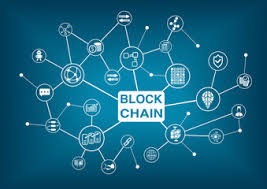Introduction to Blockchain
What is Blockchain?
Blockchain is one of the most revolutionary technologies of our era. At its core, it is a decentralized, digital ledger that records transactions across a network of computers. Instead of relying on a central authority like banks or governments, blockchain ensures transparency, security, and immutability by allowing every participant in the network to have access to the same data. Think of it as a shared notebook that everyone can see but no one can erase or tamper with once something is written. This makes blockchain incredibly powerful for industries that require trust, verification, and security without middlemen.

Blockchain technology eliminates the problem of “double-spending” in digital transactions, meaning the same digital asset cannot be used more than once. This breakthrough is what made cryptocurrencies like Bitcoin possible. But blockchain is much more than just crypto—it has applications in finance, healthcare, supply chain management, governance, and beyond. By removing the dependency on centralized control, blockchain empowers people with a system that is resistant to fraud and manipulation.
In simple terms, blockchain can be described as a technology that turns “trust” into a mathematical equation. It proves ownership, records transactions, and ensures accountability, all without needing a third party. As the digital world continues to grow, blockchain stands at the forefront of innovation, promising a future built on transparency and decentralization.
Brief History of Blockchain Technology
Blockchain did not appear overnight—it was born from decades of research and development in cryptography, distributed systems, and peer-to-peer networks. The concept first appeared in the early 1990s when scientists Stuart Haber and W. Scott Stornetta introduced a system for timestamping digital documents, ensuring they could not be backdated or tampered with. This was the earliest foundation of what we now know as blockchain.
Fast forward to 2008, an anonymous figure (or group) under the pseudonym Satoshi Nakamoto introduced Bitcoin, the first real-world implementation of blockchain. Bitcoin solved the problem of trust in digital currency without needing banks. This marked the official birth of blockchain as a powerful and disruptive technology.
Over time, developers realized that blockchain could do more than power cryptocurrencies. With the introduction of Ethereum in 2015, blockchain gained the ability to host smart contracts self-executing agreements that run on code. This innovation expanded blockchain’s use cases beyond money to areas such as decentralized applications (DApps), decentralized finance (DeFi), non-fungible tokens (NFTs), and much more.
Today, blockchain is evolving at a rapid pace. Governments are exploring central bank digital currencies (CBDCs), corporations are using it for secure supply chain management, and industries like healthcare are adopting it for data integrity. What started as a niche concept is now a global force shaping the future of technology and trust.
Why Blockchain Matters in Today’s Digital Era
In today’s world, where almost everything is digital from our money to our personal data trust has become one of the biggest concerns. Cybersecurity threats, data breaches, and lack of transparency in systems have left people questioning whether they can truly rely on digital services. This is where blockchain comes in as a game-changer.
Blockchain matters because it shifts the balance of power from centralized entities to individuals. Instead of trusting banks, governments, or corporations to maintain accurate records, blockchain allows people to trust the system itself. The technology ensures that data is secure, transactions are verifiable, and once information is stored, it cannot be altered without consensus from the entire network. This makes fraud, corruption, and tampering nearly impossible.
Moreover, blockchain promotes financial inclusion by providing access to secure digital financial systems for people who do not have access to traditional banking. In developing countries, blockchain can help farmers, small businesses, and even governments streamline their operations and gain transparency. It also opens the doors for innovations like decentralized finance, where individuals can lend, borrow, and trade without relying on banks.
In essence, blockchain matters because it is not just about money it’s about creating a trustless society where trust is built into the system itself. As we move toward a digital-first world, blockchain is emerging as the backbone of future technologies, making it as essential as the internet was in the 1990s.
Core Concepts of Blockchain
How Blockchain Works
At first glance, blockchain might seem complex, but once broken down, the concept is surprisingly straightforward. Imagine blockchain as a chain made up of digital “blocks.” Each block contains a set of data, usually transaction records. These blocks are linked together chronologically, forming a permanent and unchangeable chain of records.
When a new transaction occurs, it is grouped with others into a block. This block is then broadcasted to the network of computers (nodes). Before the block can be added to the chain, the network must verify its authenticity using a consensus mechanism a process where nodes agree on the validity of the transaction. Once verified, the block is added to the chain, and the transaction becomes permanent and visible to all participants.
Blocks, Nodes, and Miners
Blocks: Containers that store transaction data, similar to digital pages in a ledger.
Nodes: Computers in the network that maintain and validate the blockchain.
Miners: Special nodes that compete to solve mathematical puzzles to add new blocks (in proof-of-work systems like Bitcoin).
The Role of Consensus Mechanisms
Consensus mechanisms ensure that all participants agree on the state of the blockchain. Popular methods include:
Proof of Work (PoW): Used by Bitcoin, requires miners to solve puzzles to validate transactions.
Proof of Stake (PoS): Validators are chosen based on the number of tokens they hold, making it energy-efficient.
Delegated Proof of Stake (DPoS): Participants vote for representatives to validate transactions.
Without consensus, blockchain would be vulnerable to fraud and manipulation. It is the backbone of blockchain’s trustless nature.
Types of Blockchain
Not all blockchains are the same they come in different forms depending on the needs of users and organizations.
Public Blockchain
A completely open network where anyone can join, validate, and participate. Bitcoin and Ethereum are prime examples. These blockchains are fully decentralized and transparent.
Private Blockchain
Operated by a single organization with restricted access. These are often used by businesses for internal processes where control and privacy are necessary.
Consortium Blockchain
A hybrid form where multiple organizations govern the blockchain together. Commonly used in industries like banking, supply chain, and healthcare, where collaboration is essential but full decentralization isn’t practical.
Key Features of Blockchain
The reason blockchain is so powerful lies in its unique features.
Decentralization
Unlike traditional systems controlled by a central authority, blockchain distributes control across many participants. This reduces risks of corruption, censorship, and single points of failure.
Transparency
Every transaction on a public blockchain is visible to all participants. This transparency builds trust and accountability, making fraud nearly impossible.
Immutability
Once a block is added to the chain, it cannot be altered or deleted. This ensures data integrity and prevents tampering, making blockchain one of the most secure systems ever created.
Applications of Blockchain
Blockchain in Cryptocurrency
When people hear “blockchain,” their minds usually jump straight to Cryptocurrency and for good reason. Cryptocurrency was the first and most famous application of blockchain technology. Bitcoin, launched in 2009, introduced the world to a decentralized form of money that could be sent and received without banks or intermediaries. Unlike traditional currencies controlled by governments and central banks, cryptocurrencies run on a blockchain network, where users collectively maintain and verify the system.
The beauty of blockchain in cryptocurrency lies in its transparency and security. Every transaction is recorded on a public ledger, accessible to anyone. This eliminates the need for blind trust in financial institutions. Moreover, blockchain solves the problem of double-spending ensuring that digital money cannot be copied or reused fraudulently. Transactions are verified by consensus, meaning they cannot be reversed or faked once added to the chain.
Beyond Bitcoin, other cryptocurrencies like Ethereum, Litecoin, and Ripple expanded blockchain’s role by offering more than just digital money. Ethereum, for example, introduced **smart contracts**, allowing developers to build decentralized applications (DApps) on its blockchain. This innovation sparked the birth of decentralized finance (DeFi), a movement that enables borrowing, lending, and trading without banks.
Today, cryptocurrencies are no longer just an experimental idea. They are recognized as assets, traded on global exchanges, and even adopted as legal tender in some countries like El Salvador. Although volatile, they represent the future of money, built on blockchain’s promise of independence, security, and transparency.
Blockchain in Finance & Banking
The financial sector is one of the industries most disrupted by blockchain. Traditionally, banks act as middlemen in nearly all transactions—handling payments, loans, settlements, and records. This system, while effective, is slow, expensive, and prone to errors or fraud. Blockchain changes this by offering a direct, peer-to-peer way of transferring value, reducing the need for intermediaries.
For instance, cross-border payments, which usually take days and involve high fees, can be settled almost instantly using blockchain. Ripple (XRP) is a popular example, enabling banks and financial institutions to move money quickly and cost-effectively across borders. Similarly, blockchain can streamline back-office processes like record-keeping, auditing, and compliance, saving billions of dollars for financial institutions.
Another key development is decentralized finance (DeFi). Instead of relying on banks, people can now lend, borrow, and earn interest using smart contracts on blockchains like Ethereum. This opens financial services to people who don’t have access to traditional banking, particularly in developing countries. Central banks are also exploring CBDCs (Central Bank Digital Currencies), which use blockchain technology to create digital versions of national currencies.
By making financial systems faster, cheaper, and more inclusive, blockchain is reshaping the very foundation of banking and finance. Instead of being a threat, many banks are now embracing blockchain to stay relevant in the digital economy.
Blockchain in Supply Chain Management
Supply chains are complex webs of manufacturers, suppliers, logistics providers, and retailers. Tracking products from origin to destination is often difficult, leading to inefficiencies, fraud, and even counterfeit goods. Blockchain offers a revolutionary solution by providing a transparent and tamper-proof record of every step in the supply chain.
With blockchain, each product can be assigned a digital identity that records its journey from raw materials to manufacturing to shipping and finally to the consumer. For example, in the food industry, blockchain can track produce from farm to table, ensuring safety, authenticity, and freshness. Walmart has already implemented blockchain to trace the source of its food products within seconds, instead of days.
Similarly, in industries like fashion and luxury goods, blockchain helps verify authenticity, protecting brands and consumers from counterfeiting. Pharmaceutical companies also use blockchain to trace medicines, preventing the spread of fake drugs, which is a major global issue.
By ensuring transparency and accountability at every step, blockchain strengthens trust between businesses and consumers. It reduces fraud, enhances efficiency, and builds more reliable supply chains for the future.
Blockchain in Healthcare
The healthcare industry generates massive amounts of sensitive data patient records, lab results, prescriptions, and more. Unfortunately, these records are often fragmented, stored in different systems, and vulnerable to cyberattacks. Blockchain offers a secure and unified way to manage healthcare data.
With blockchain, patients can have complete control over their medical records. Instead of relying on hospitals or clinics to maintain files, patients can access a blockchain-based system where all records are securely stored and only shared with authorized parties. This ensures privacy, security, and accessibility across different healthcare providers.
Blockchain also helps with drug traceability, clinical trials, and insurance claims. For example:
Drug Traceability: Prevents counterfeit drugs by tracking production and distribution.
Clinical Trials: Ensures research data cannot be manipulated or falsified.
Insurance Claims: Automates claim verification using smart contracts, reducing fraud and delays.
By making healthcare more transparent, efficient, and secure, blockchain has the potential to save lives and billions of dollars in healthcare costs. It empowers patients while reducing the burden on healthcare providers.
Blockchain in Voting Systems
Voting is one of the most critical aspects of democracy, but it is often plagued by fraud, manipulation, and inefficiencies. Traditional voting systems, whether paper-based or electronic, are vulnerable to tampering and lack transparency. Blockchain can solve these issues by creating secure, transparent, and tamper-proof voting systems.
In a blockchain-based voting system, each vote is recorded as a transaction on the blockchain. Once submitted, it cannot be altered or deleted, ensuring integrity. Voters can also verify that their votes were counted correctly without compromising anonymity. This not only builds trust but also encourages more participation.
Blockchain voting systems also have the potential to allow remote voting, making elections more accessible to people who cannot physically attend polling stations. Countries like Estonia have already experimented with blockchain-based voting, and other nations are exploring it as a way to strengthen democracy.
By ensuring transparency, security, and trust, blockchain voting could eliminate fraud and restore confidence in electoral systems worldwide.


